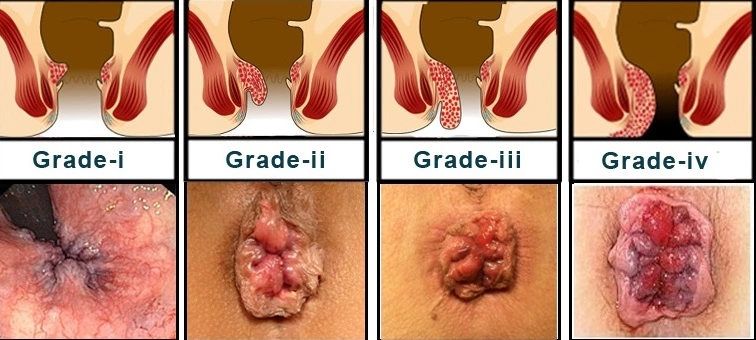
Dr. Rajendra Sonavane
M.S.,F.I.C.S.,F.I.A.G.E.S.,F.I.S.C.P.
Certified training in LASER surgery, Germany & Poland
What are Piles (Hemorrhoids)?

Piles(Hemorrhoids), also known as Mulvyadh or Bavasir, are swellings that occur inside and around the anus, and along the anal canal. Our anal canal is made up of cushions of tissue that are full of blood vessels. Due to various reasons, these cushions get inflamed and swollen up, resulting in piles. Piles occur in a range of sizes, and they may be internal or external.
What Are The Causes Of Piles (Hemorrhoids)?
- Chronic constipation: When there is pressure to move stools, there is additional strain on the walls of the blood vessels, causing piles.
- Pregnancy: During the pregnancy as the uterus enlarges, it presses on the veins in the anal canal, resulting in bulge and piles. Hence, the incidence of piles post child-birth is significantly high.
- Aging: Occurrence of piles among the elderly population is high because of lack of support to the cushions in the anal region.
- Diarrhea: Piles can occur after repeated episodes of chronic diarrhea.
- Sitting for too long: Those with desk jobs or ones with a tendency to spend long hours on the toilet seat, are at a risk of developing piles.
- Heavy lifting: Repeatedly lifting heavy objects can lead to piles.
- Obesity: Obesity can cause piles .
- Genetics: Some people inherit a familial tendency to develop piles.
- Cancer: Though cancer is not the cause of piles, but piles can co-exist along with cancer of the large intestine making its diagnosis difficult.
What Are Types Of Piles?
Piles can be internal or external
- Internal Piles - They are located within the anal canal, and can’t be seen or felt. The only symptom is usually bleeding while passing motion.
- External Piles - They are located around the anus right under the skin, where there are many pain-sensing nerves. They, therefore, hurt as well as bleed.
What are Grades of Piles?
- Grade1: These are tiny haemorrhoids within the lining of the anus not seen from outside.
- Grade 2: These haemorrhoids too lie within the anus and are slightly larger than grade 1 haemorrhoids. These haemorrhoids may get pushed out while passing stool but return to the original position on their own.
- Grade 3: These are also known as prolapsed haemorrhoids. They appear outside the anus. The patient can push them back in by pressing against them with his fingers.
- Grade 4: These haemorrhoids cannot be pushed back and stay outside the anus at all times.

How do you know that you are suffering from Piles?
- Bright red bleeding from the anus while passing motion. Blood may streak the bowel movement or the toilet paper or it can be like a splash in the pan.
- Pain during bowel movements.
- Painful swelling or a lump near the anus.
- Anal itching.
- Mucous discharge from the anus.
- Hard lump around the anus.
- Area around the anus becomes red and sore.
- Weakness, fatigue and breathlessness due to blood loss and anemia.
When Do You Need To See The Doctor?
If you have any of the above-mentioned complaints or symptoms, do not take them lightly, see your doctor!!
How does a Doctor diagnose (Find out) Piles?
Proctocare Clinic is well equipped with all the latest facilities and equipment for accurate diagnosis of piles. At the very beginning doctor will ask a detailed history about your illness, then will perform a careful digital and proctoscopic examination. Proctocare Clinic has a videorectoscope which can give better definition of the anal canal. Sometimes you may be advised to undergo an investigation called videocolonoscopy which involves the use of a small high definition video camera fitted on a flexible endoscope to find out more about your whole of large intestine.
How do we treat Piles (Hemorrhoids)?
There are various treatment options (modalities) offered at Proctocare Clinic. For initial stages of piles, doctor may recommend dietary changes with oral medicines and topical cream for application. For those who need surgery, Proctocare Clinic offers the latest advanced LASER treatment.
Depending on the grade of piles, we offer the following treatments to the patient:
- GRADE 1 Piles : They can be treated with medicines and dietary and life style modifications.
- GRADE 2 Piles : They can be treated with INFRARED COAGULATION or LASER treatment.
- GRADE 3 Piles : They require LASER treatment Surgery.
- GRADE 4 Piles : They require LASER surgery or STAPLER procedure.